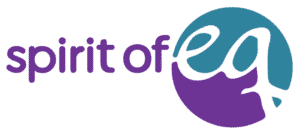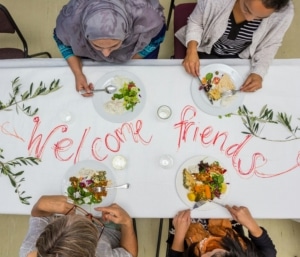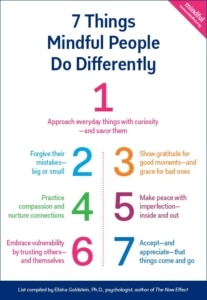Awaken to Your Story: Attuning to Your Narrative
Do you feel that inner voice calling you to awaken to your own story? Perhaps it whispers to you amidst the chaos of daily life, urging you to sift through the messiness of your experiences. In a world saturated with stories—some uplifting, others disheartening—how do we navigate our own narrative? How do we transform the tales we tell ourselves into something more empowering?
In this blog, I would like to explore the concept of ATTUNING to what is true for you, drawing on some of the transformative work of Michael White and David Epston in Narrative Therapy. We will delve into the importance of critical thinking, critical feeling, and critical spiritual reflection, and how these practices can help us change the narratives we live by.
Every day, there is a call to awaken, (yes it is true) and since we are bombarded with stories—news headlines, social media posts, and of course the narratives of those around us, we may miss the call. These stories shape our perceptions, ideas and influence our beliefs about ourselves and the world. But amidst this cacophony of noise, do we take the time to listen to our own story?
The first step in this journey is recognizing that you have a story worth telling. It’s easy to feel lost in the noise, but your experiences, no matter how tangled or messy, are valid. They are the threads that weave the fabric of your identity.
To truly awaken to your story, you must engage in critical thinking, critical feeling, and critical spiritual reflection. This means being fearless in asking yourself the right questions about your life. Are you living in alignment with your values? Are you allowing external narratives to dictate your self-worth? Do you go along with the flow of information because it is much easier than “thinking”?
For instance, consider a person who has faced significant challenges in their career or life. They may feel defined by their failures, believing that they are not capable of success. However, through critical reflection, they can begin to identify moments of resilience and growth. Perhaps they overcame a difficult project or received positive feedback from a colleague. These “unique outcomes” can serve as powerful reminders that their narrative is not solely defined by setbacks. In fact the pain of a setback might just be like shedding skin that is to small for this next part of your like.
Ahhh now comes a part I love, attuning to your own story involves listening closely to your experiences and emotions. It requires a willingness to explore the depths of your inner narrative, even the uncomfortable parts. This is where the work of Michael White and David Epston becomes particularly relevant. Their approach emphasizes the importance of attuned listening and the exploration of life stories to identify unique outcomes that contradict problem-saturated narratives
Here is an example to put it in to context, imagine a woman named Sarah who has always struggled with feelings of inadequacy. She often compares herself to others, believing she falls short in her personal and professional life. This narrative has become so ingrained that it affects her relationships and self-esteem. Through the process of attuning to her story, Sarah begins to reflect on her experiences. She recalls a time when she successfully led a team project, receiving praise for her leadership skills. By focusing on this unique outcome for her, Sarah can start to re-author her narrative. Instead of seeing herself as inadequate, she begins to recognize her strengths and capabilities.
This reframing holds immense value. It empowers Sarah to approach future challenges with a renewed sense of confidence, allowing her to break free from the constraints of her previous narrative.
There is value in identifying unique outcomes that is a cornerstone of Narrative Therapy. These moments serve as evidence that contradicts the dominant, problem-saturated narratives we often tell ourselves. By focusing on these positive experiences, we can begin to shift our perspective and create a more empowering story
Please consider another example: a young man named Alex who has always felt overshadowed by his siblings. He believes he is the “black sheep” of the family, struggling to find his place. However, through attuned listening and reflection, Alex recalls a time when he pursued a passion for art, receiving recognition for his talent in a local exhibition. This unique outcome challenges his narrative of being unworthy or unaccomplished. By embracing this moment, Alex can begin to see himself as an individual with unique gifts and contributions. This shift not only enhances his self-esteem but also allows him to engage more authentically with his family and community.
Using myself as an example, I grew up with Dyslexia and ADHD together at a time when most professionals did not know what to do with this behavior. The outside noise in the names I was called, the looks I endured, and the extream loneliness was soul crushing. I truly felt that I was worth, nothing, absolutely nothing. But I had one teacher that saw something in me and suggested a cooking program that I started in 10th grade. It changed my life! I saw that I had value and started to tune out the noise that was destructive and paid attention to the noise that was helping me grow. I eventually started the journey that took me to years of training in the social practices like spiritual direction and coaching. It answered my questions and helped me to shine a light, illuminating that path that others might want to take.
So, here are a few of my thought in how we can change the narratives we tell ourselves? It begins with a commitment to attune to our own stories. Here are some practical steps to help you on this journey:
Practice Attuned Listening: Set aside time to reflect on your experiences. Write in a journal or speak to a trusted friend or therapist who can listen without judgment.
Identify Unique Outcomes: Look for moments in your life that contradict your dominant narrative. What achievements, strengths, or positive experiences can you highlight?
Re-author Your Story: Use the unique outcomes you’ve identified to reframe your narrative. Instead of focusing on limitations, emphasize your strengths and resilience.
Engage in Critical Reflection: Regularly ask yourself questions that challenge your beliefs. Are you living in alignment with your values? What stories are you allowing to define you?
Embrace the Messiness: Understand that your story may be complex and messy. Embrace the imperfections and recognize that they are part of your journey.
Awakening to your own story is a powerful and transformative process. By attuning to what is true for you, you can begin to change the narratives that shape your life. The work of Michael White and David Epston in Narrative Therapy can offer valuable insights into how we can explore our stories and identify unique outcomes that empower us.
As you embark on this journey, remember that your story is yours to tell. Embrace the messiness, engage in critical reflection, and allow yourself to re-author your narrative. The outcome may hold more value than you ever imagined, leading you to a life that is more authentic, fulfilling, and true to who you are.
So, do you feel called to awaken to your story? The journey begins with you.



